Showa-bashi Bridge (2)
After crossing the Showa-bashi Bridge, I arrived at the intersection with Route 18.
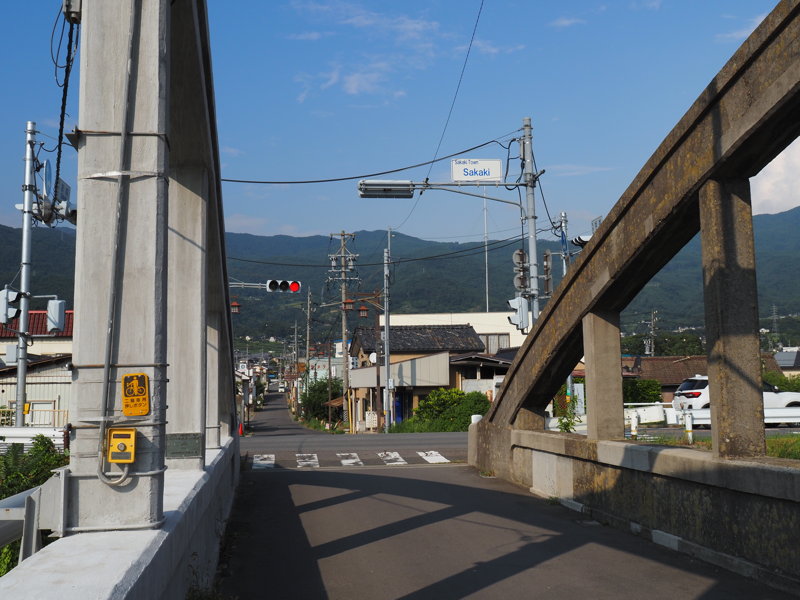
A traffic signal push button for motorcycles is installed on the left side of the hanger (the part that looks like a pillar). On the next hanger, there is a plaque that reads “JSCE Recommended Civil Engineering Heritage”, although the texts are not legible in this photo.
View of the bridge from the Route 18.
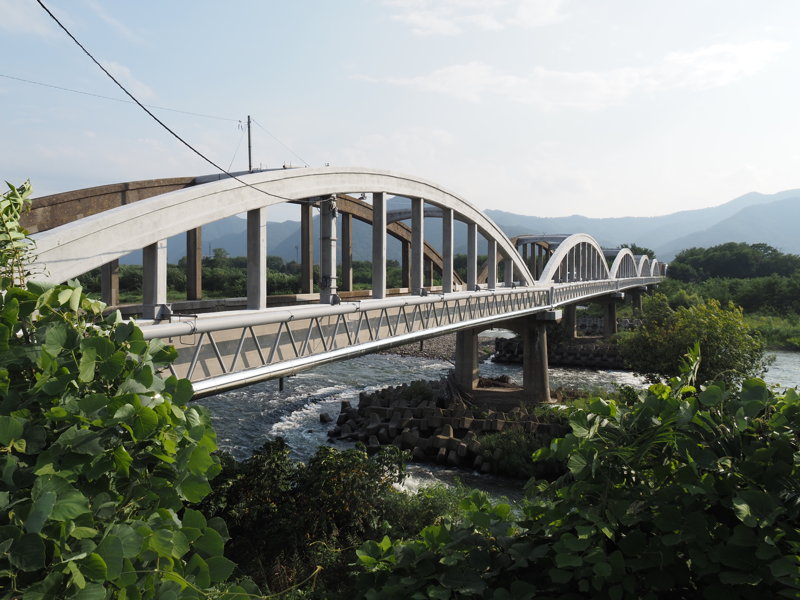
I moved a little downstream.
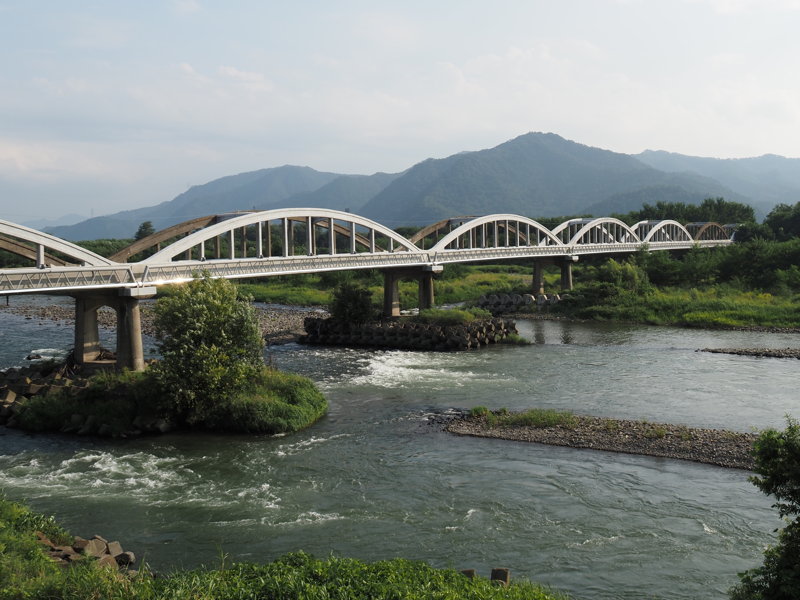
Then I moved to the upstream side.
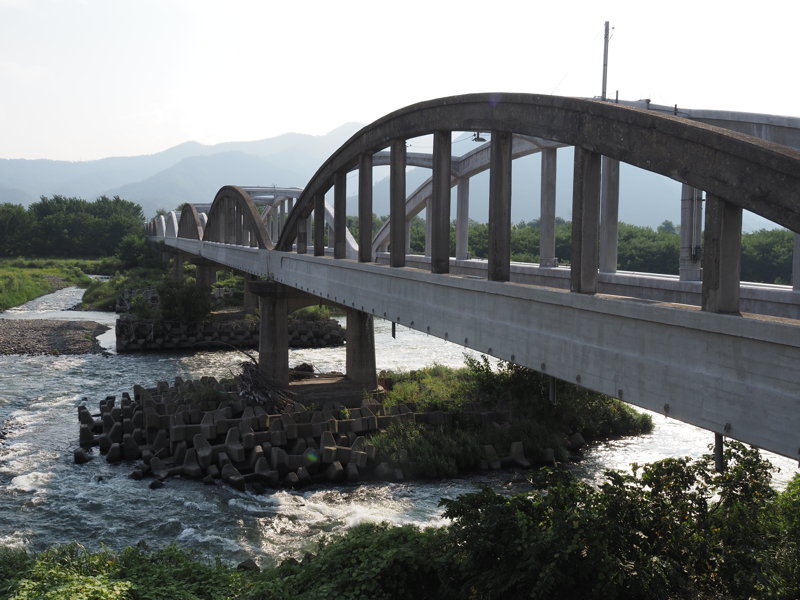
Let’s walk across the bridge again.
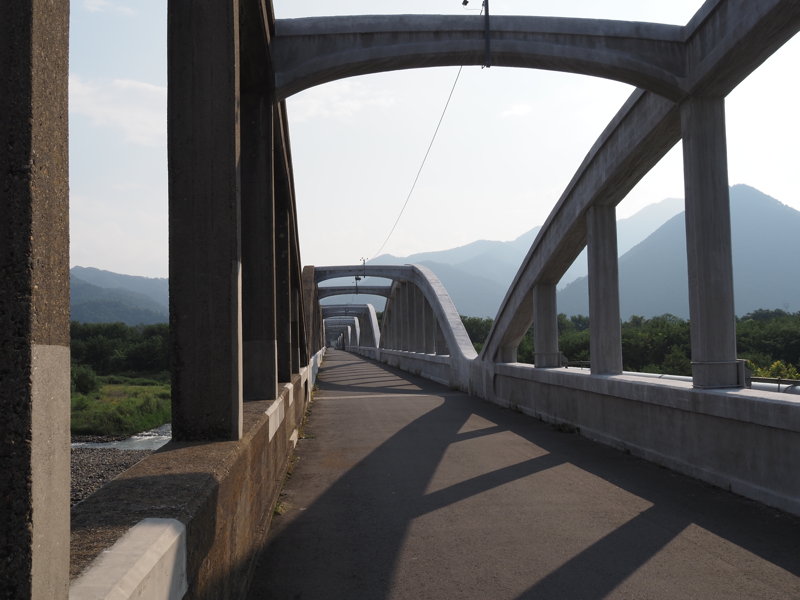
Scenery of the upstream side.
The Sakaki Ohashi Bridge can be seen 500 meters upstream, opened in 1987.
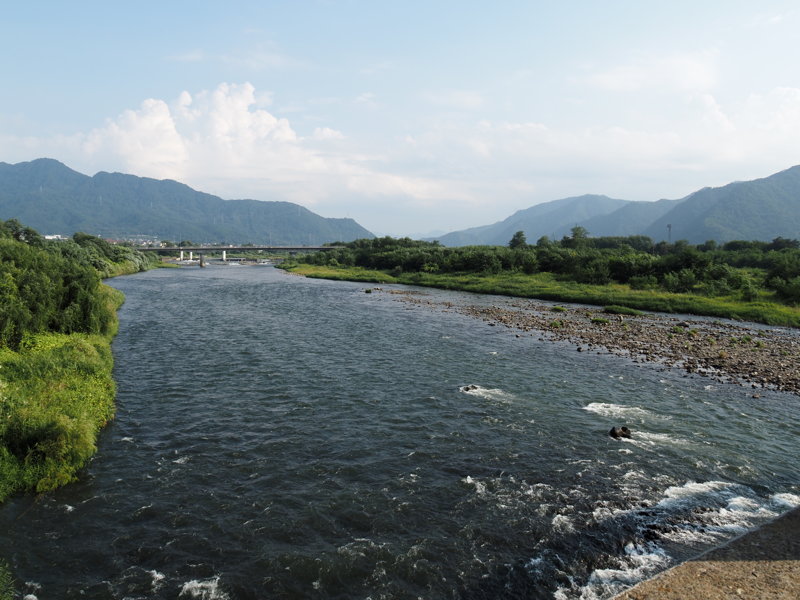
The connecting part of the girders.
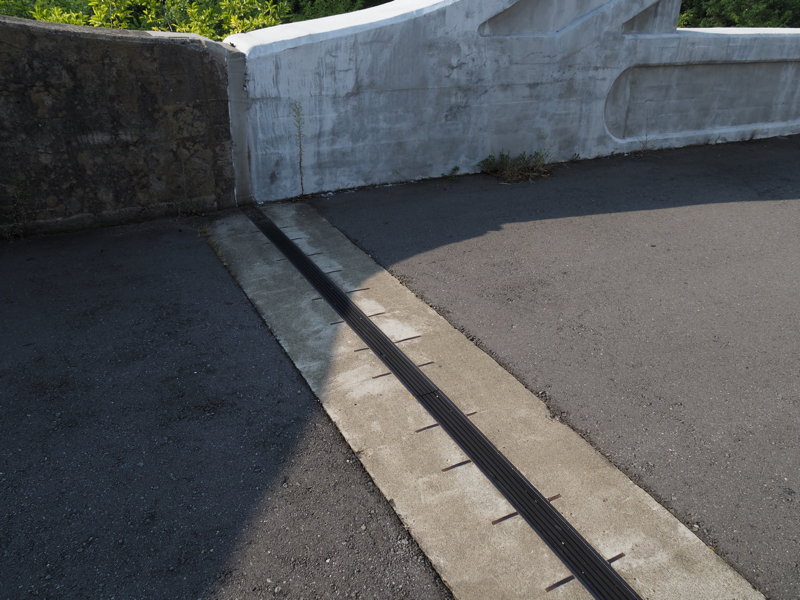
The repaired hanger.
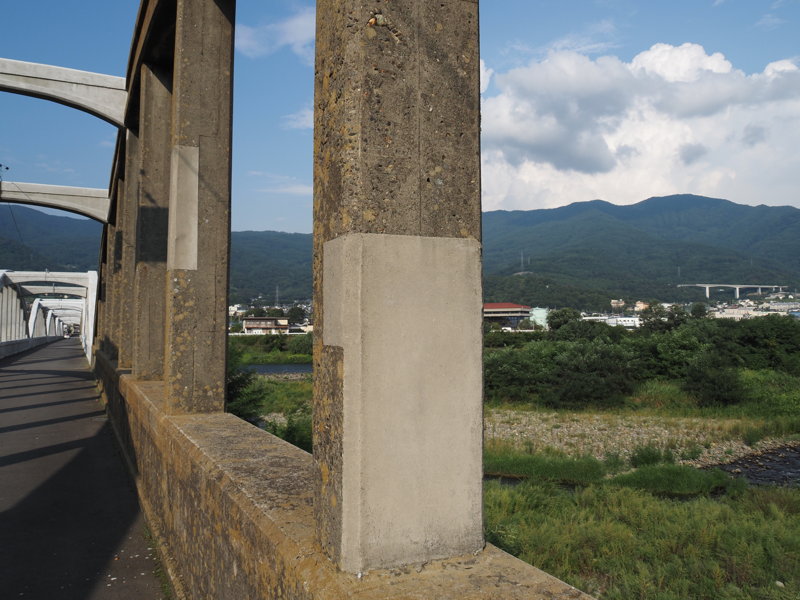
Passing the reinforced concrete section, I am now at the steel bridge section.
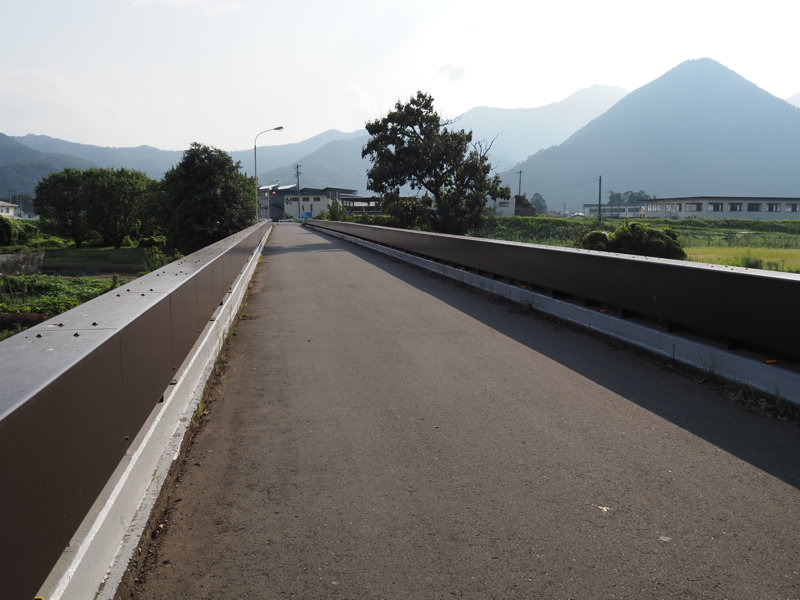
I finished crossing the bridge. It is hard to grasp in this photo, but this is the side of the bridge. The newel is on the far left.
There is a path next to the bridge, so let’s go there for a moment.
The bridge girder had a record that it was painted in 2019.
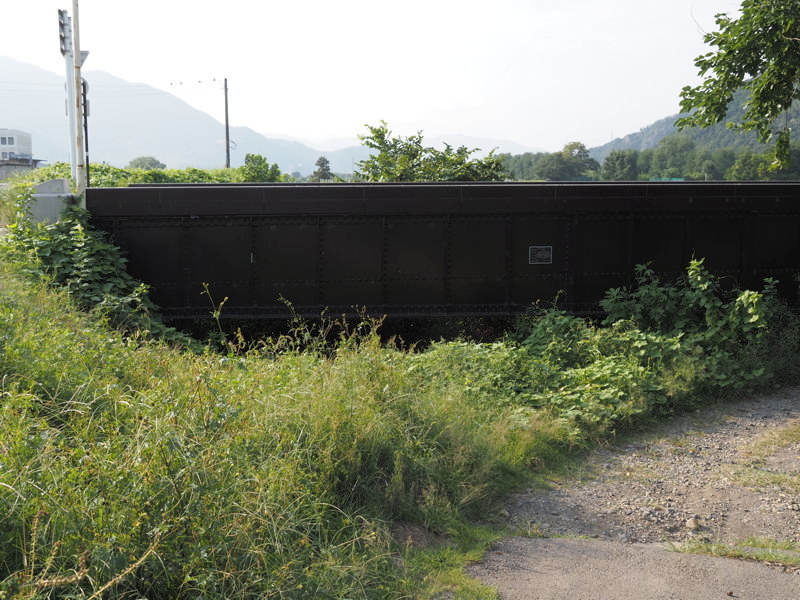
I continue on the side of the bridge. In this area, the right side of the bridge is used as farmland.
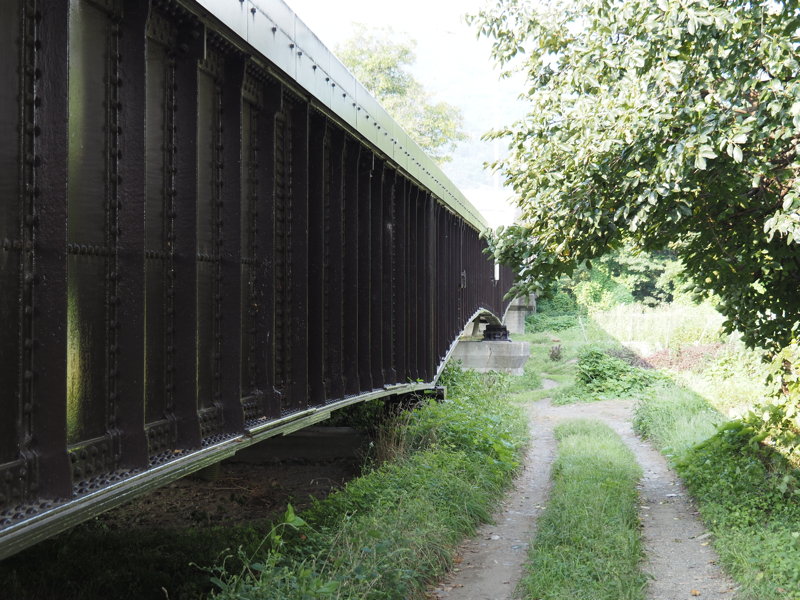
I entered the lower part of the reinforced concrete bridge. Beyond this point seems to be a riverbed. I felt it could not go any further, so I turned back at this point.
The oval pipe running under the bridge seems to be an NTT cable.
The stainless steel pipe on the left seems to be a water line.
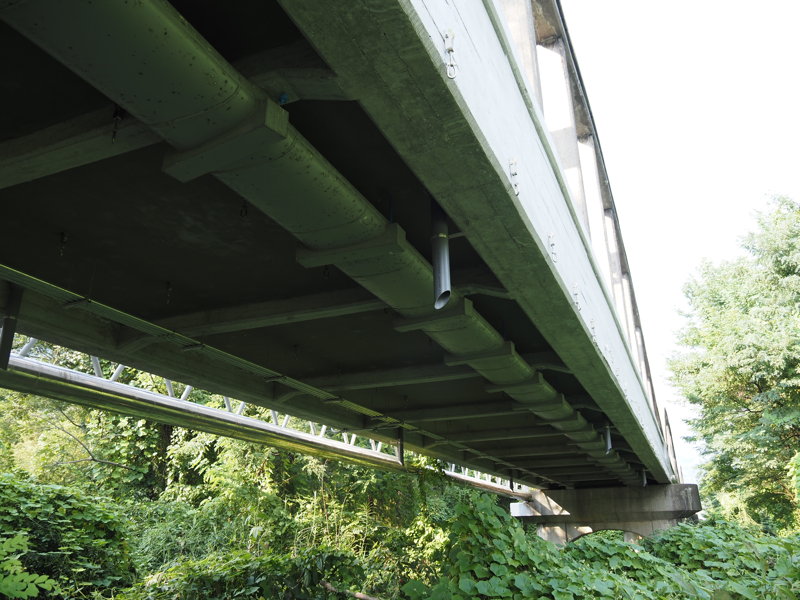
While returning to the road, I photographed the piers.
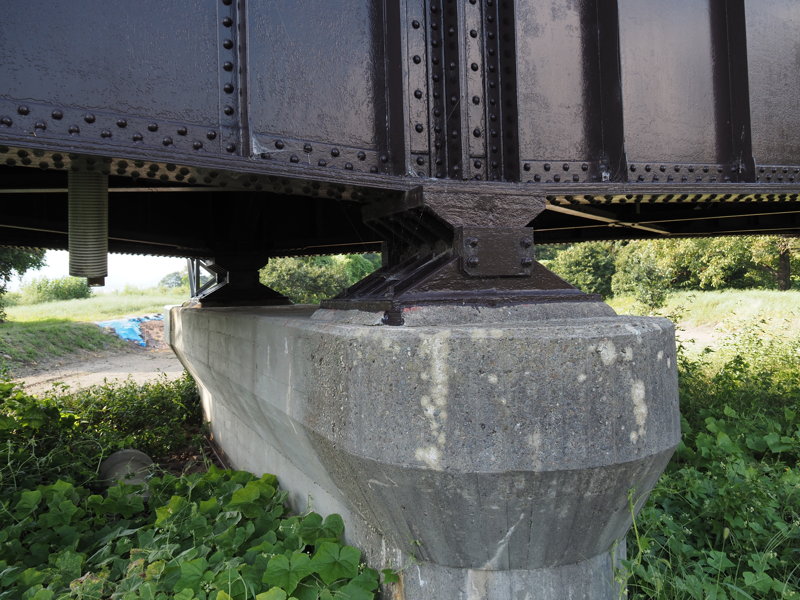
Passing under the bridge and photographed from the west. The water pipe is probably reinforced with trusses above it.
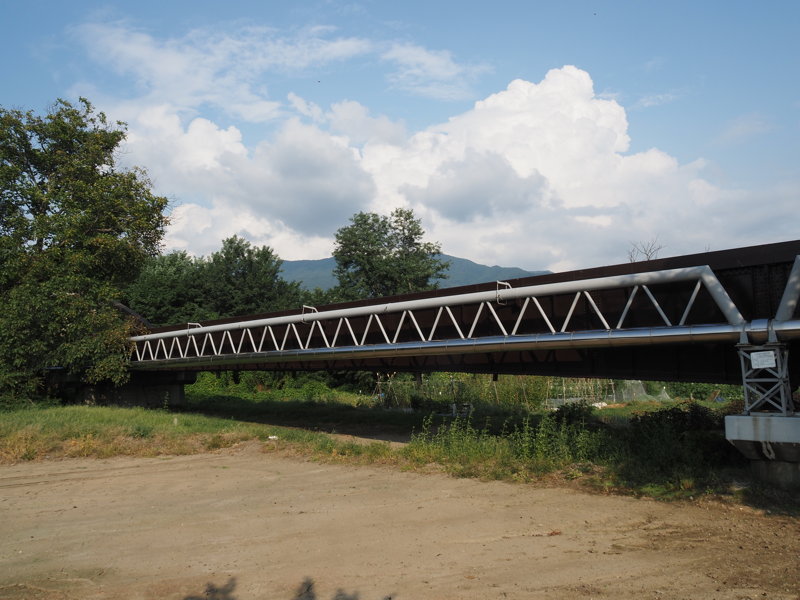
I was back at the first location.
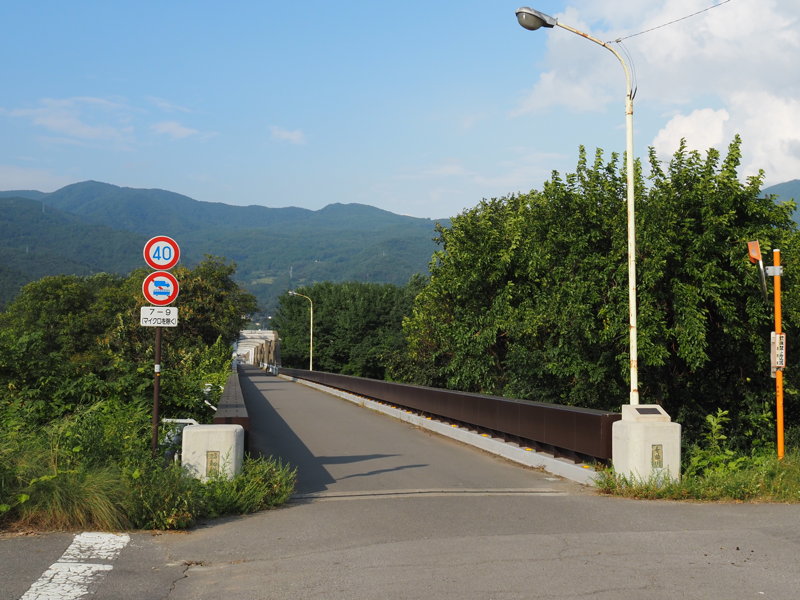
As I wrote in the last issue, there is a plaque on the bridge that reads, “Built by Tokyo Ishikawajima Ship Building & Engineering Co. Ltd in 1931″.
Let’s reconfirm the history of the Showa-bashi Bridge.
The first wooden bridge was built in 1928. It was a joint project between Murakami Village on the left bank of the Chikuma-gawa River and Sakaki Town on the right bank.
Although the bridge was built, the wooden bridge was easily washed away by flooding, and the local people wanted a permanent bridge.
In 1935, Muroga Village joined Murakami Village and Sakaki Town in planning the construction of a permanent bridge. However, because it was a town and village road, there was a limit to the amount of money that could be spent by the three local governments. Therefore, it was decided to build a reinforced concrete Lohse girder bridge only on the Sakaki side for the first three span lengths. The bridge was completed in 1937.
Later still, the wooden bridge section was washed away repeatedly during floods.
In 1947, the Showa Bridge became a prefectural road.
In 1949, the wooden bridge was washed away again by Typhoon Kitty. Construction of the bridge was approved as a disaster rehabilitation project, and construction of the reinforced concrete bridge was finally underway.
Construction began in November 1950 and was completed in November 1952.
However, the south side of the bridge remained a temporary wooden bridge, which did not allow for smooth traffic due to the increase in the number of automobiles.
Therefore, it was decided to make the south side a permanent bridge as well, and the Showa-bashi Bridge No. 2 was completed in September 1964.
This steel bridge is said to be a reworked version of the Saigawa River steel bridge over National Route 19 in Ikusaka Village. The original iron bridge (Gerber Garter Bridge) was built in 1931. (From the “Showa Bridge Pamphlet”)
In other words, the plate on the south end of the Showa-bashi Bridge is probably the plate that was attached to the steel bridge before it was moved. After the bridge was relocated, the plate was reattached to the top of the newel, I guess.
The Pamphlet by Sakaki Town does not give the specific name of which bridge was relocated.
If it was a bridge over the Saigawa River on National Route 19 in Ikusaka Village, I think the most likely bridge would be the Mutsumi-hashi Bridge on the border between Azumino City and Ikusaka Village.
According to the “Visual History of Akashina” construction of the (old) Mutsumi-hashi Bridge was completed in December 1931, and the new Mutsumi-hashi Bridge was completed in March 1962. The length of the new bridge is 124m, so there is no discrepancy in length.
A photo of the Mutsumi-hashi Bridge taken in 1938 is also included in the same book. From the shape of the bridge, it is safe to assume that it is the same as the current Showa-bashi Bridge No. 2. (See 5 previous photos, etc.)
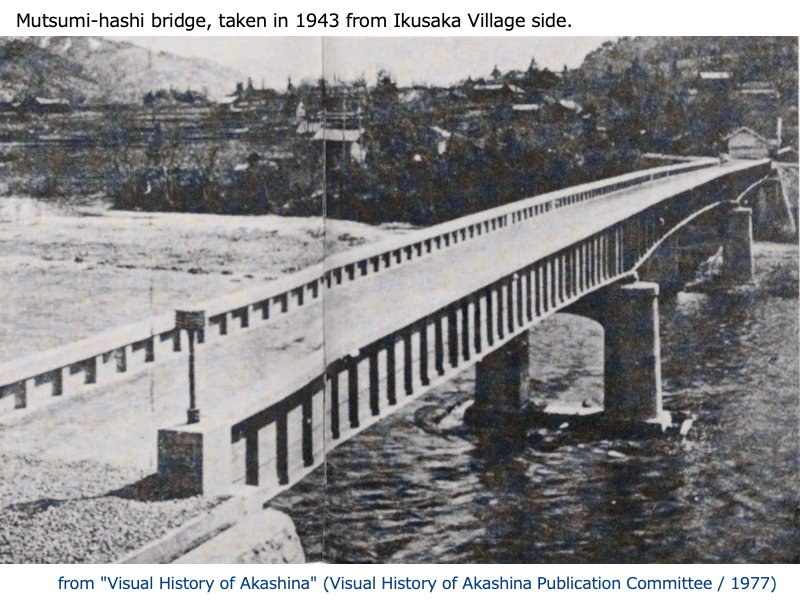
Let’s return to the history of the Showa-bashi Bridge.
In the 1970s, the Showa-bashi Bridge became congested due to increased automobile traffic. Therefore, it was decided to build a new Sakaki Ohashi Bridge 500m upstream of the Showa Bridge.
Planning began in 1974, and the bridge itself was broken ground in 1981 and opened to traffic in 1987.
The Showa Bridge was a prefectural road until Sakaki Ohashi Bridge was built, but after its completion, the Sakaki Ohashi Bridge became a prefectural road and the Showa-bashi Bridge reverted to a town road.
In 2002, the Showa-bashi Bridge was selected as a Civil Engineering Heritage Site.
Takeshi Nakajima (1906-1980), a native of Sapporo, worked as an engineer in Ibaraki and Gifu prefectures before being assigned to Nagano Prefecture in 1933. During his three and a half year tenure, he designed seven reinforced concrete, Lohse girder bridges.
The seven bridges were,
* Ote-bashi Bridge (Kiso Town) completed in 1936
* Oyazawa-bashi Bridge (Otari Village) completed in 1937
* Himekawa-bashi Bridge (Otari Village) completed in 1937
* Showa-bashi Bridge (Sakaki Town) completed in 1937
* Sakae-bashi Bridge (Sakuho Town) completed in 1938
* Sakai-bashi Bridge (Tomi City) completed in 1938, removed in 1972.
* Koshigoe Bridge (Ueda City) completed in 1939, removed in 1992.
(The place names are the names of current municipalities.)
Of these bridges, the five bridges that still exist were selected as Civil Engineering Heritage in 2002.
The reason for the selection is stated as “the world’s first set of reinforced concrete Lohse girders, created by the ingenuity of Takeshi Nakajima, an engineer of Nagano Prefecture".
In the 1950s and 1960s, about 30 concrete Lohse girder bridges were built in Nagano Prefecture. The only other examples are in Okayama and Yamaguchi prefectures (each three bridges), and the number of bridges in Nagano Prefecture is outstandingly large. This may be due to the influence of Nakajima.
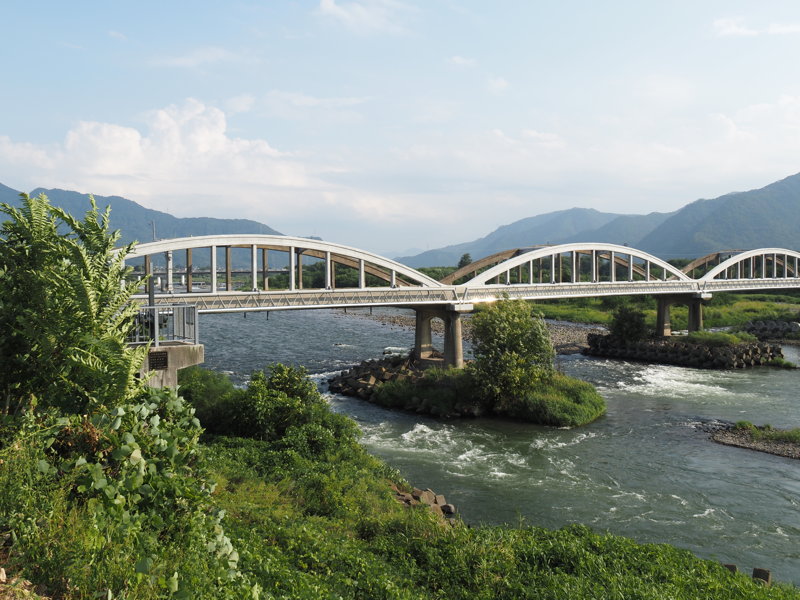
I would like to check the other four bridges someday.
[Reference] (written in Japanese)
“Sakaki Town History, Vol. 2 (History Edition 2) " (Sakaki Town History Publication Society/1981)
“Visual History of Akashina" (Visual History of Akashina Publication Committee / 1977)
“Showa-bashi Bridge Pamphlet” (Sakaki Town / 2023)
“RC Lohse girders designed by Takeshi Nakajima" (website : Japan Society of Civil Engineers)
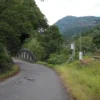
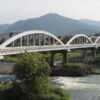
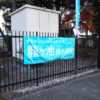
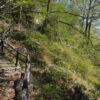
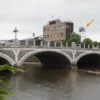
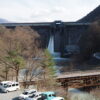
Discussion
New Comments
No comments yet. Be the first one!